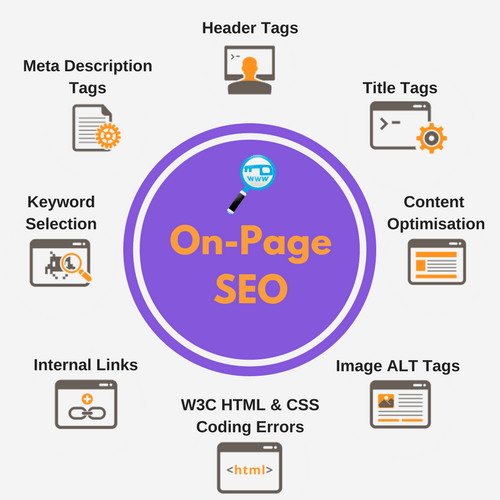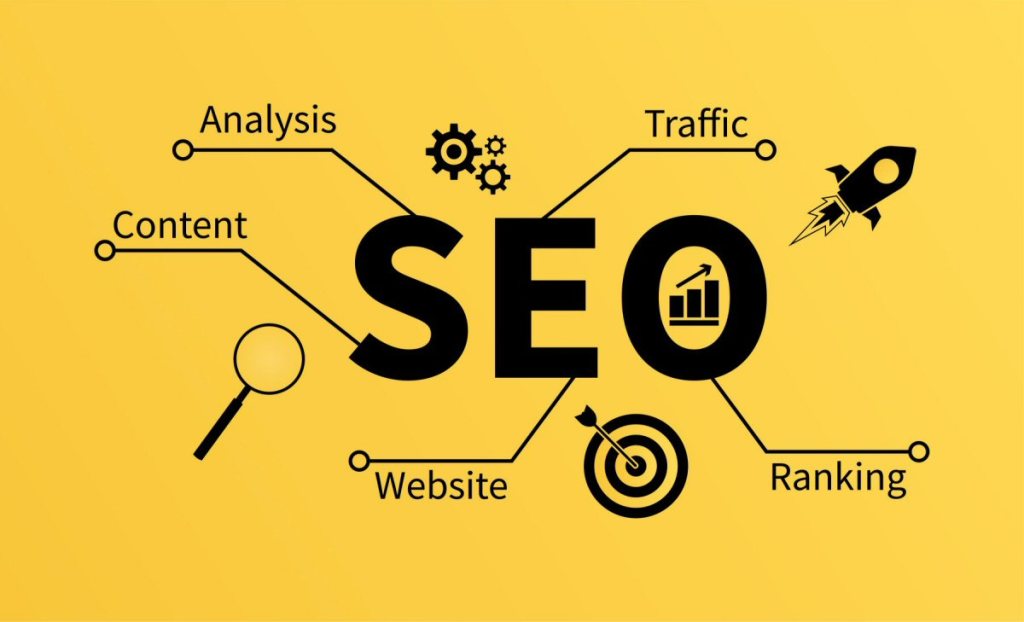Definition:-On-page SEO (also called on-site SEO) is the process of optimising web pages and their content for both search engines and users. It can help rank pages higher on Google and drive more organic traffic. Common tasks associated with on-page SEO include optimising for search intent, title tags, internal links, and URLs.

Importance of On page SEO
On-page SEO helps search engines analyse your website and the content connected to it so that it can identify if a searcher’s query is relevant to your site. Google is constantly updating their algorithm so that it can better understand a searcher’s intent and deliver search results that meet that user’s needs. As Google’s algorithm develops, so should your website.
It is essential that your website and its content, including what is visible to users (i.e. media, content, images) and what is visible to search engines (i.e. meta data, HTML), are optimised to the latest practices used by companies like Google and Bing. This way search engines can understand your site and how to rank it.
On-Page SEO Techniques
- Write unique, helpful content
- Place target keywords strategically
- Write keyword-rich title tags
- Write click-worthy meta descriptions
- Use headings and subheadings to structure your page
- Optimize URLs
- Add internal links
- Add external links
- Include and optimize images

- Keyword Research:
- Identify relevant keywords for your content using tools like Google Keyword Planner, Semrush, or Ahrefs.
- Use long-tail keywords for more specific targeting.
- Title Tags:
- Create compelling and concise title tags (less than 60 characters) that include your target keyword.
- Make sure the title accurately reflects the content of the page.
- Meta Descriptions:
- Write unique and compelling meta descriptions (around 150-160 characters) that encourage clicks.
- Include your target keyword naturally.
- Header Tags:
- Structure your content with header tags (H1, H2, H3, etc.).
- Use keywords in your headings to indicate the hierarchy of information.
- URL Structure:
- Create SEO-friendly URLs that are short, descriptive, and include your target keyword.
- Avoid using unnecessary parameters and symbols.
- Keyword Placement:
- Place your target keywords strategically in the content, including the first paragraph.
- Ensure keyword usage feels natural and doesn’t compromise readability.
- Content Quality:
- Create high-quality, valuable, and relevant content that addresses user intent.
- Aim for longer-form content, where appropriate, as it tends to perform well in search rankings.
- Internal Linking:
- Include internal links to relevant pages within your website.
- Use descriptive anchor text that provides context about the linked content.
- Image Optimization:
- Optimize images by using descriptive file names and alt tags.
- Compress images to improve page loading speed.
Remember, SEO is an ongoing process, and it’s essential to monitor your website’s performance, adapt to algorithm changes, and continuously refine your on-page SEO strategies.



Leave a comment